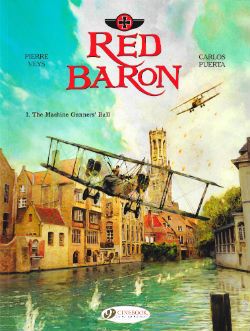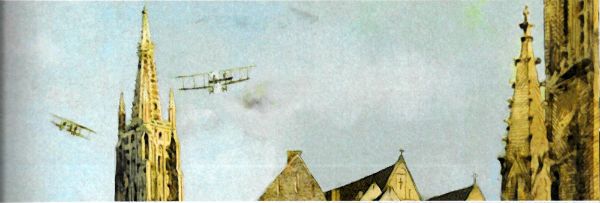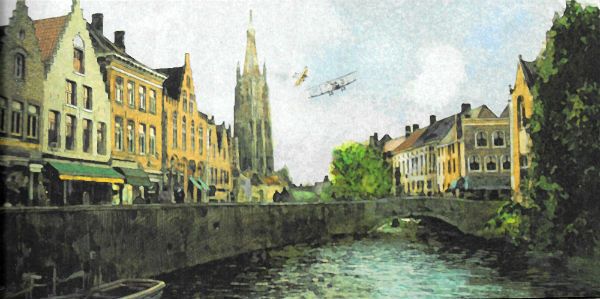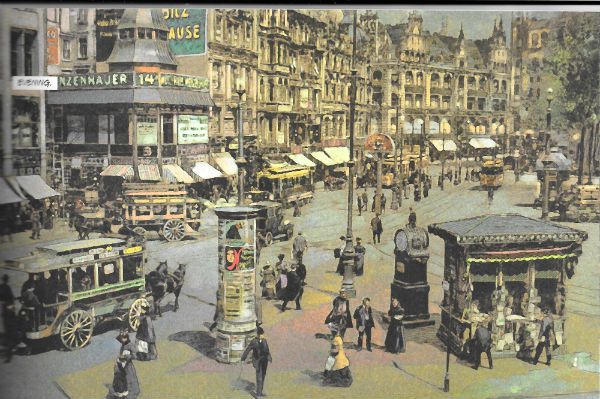"MY HAND!" COMICS! Sometimes They Go UP! Diddley Om Pom! Sometimes They Go Down!
/Oh! Good Day! Here’s a thrilling feature for your perusement and entertattlement right fine and glissome, no mistakers. Hmm. Bit rusty. Pokkita-Pokkita-Pokkita! Rum bugger’s coming at us out of the sun! Don’t worry it’ll all be over by Christmas. Or in three minutes. Depends what we’re talking about, you big dreamweasel, you! C hocks away..!
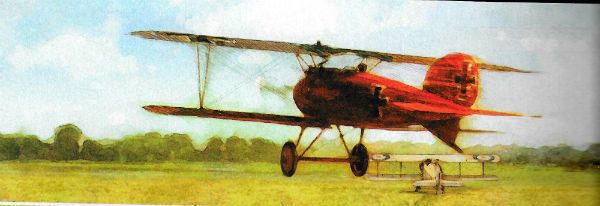
The Red Baron by Puerta, Veys & Bence
Anyway, this... THE RED BARON 1. The Machine Gunners' Ball Art by Carlos Puerta Written by Pierre Veys Coloured by Carlos Puerta Translated by Mark Bence Cinebook, 6.99(UK)/11.95(US) (2014) Originally published as Baron Rouge – Le Bal De Mitrailleuses, Zephyr Editions (2012)
This, the first of a series of three slim graphic novels, is about The Red Baron. Yes, like in Peanuts, but this is the real one not a dog on a kennel indulging in violent fantasies. The Red Baron was the name given to a real-life WW1 German ace (christened Manfred Albrecht Freiherr von Richthofen; phew!) because he flew a big red plane and was a sort-of-kinda-Baron (Wikipedia tells me “Baron” here is really a slightly fudged translation of “Feiherr” which has stuck, despite the more accurate German names for him being "The Red Battle Flyer" or "The Red Fighter Pilot", because the German language hadn’t quite picked up on the 20th Century revelation that tedious precision is the death of sexy brevity.) Despite being a stranger to the concept of camouflage von Richtofen racked up 80 confirmed kills in a variety of planes, not all of which were his famous triplane or as red as a hooker’s lippy. He was also an interesting occurrence of the cult of celebrity when that kind of thing was a rarity rather than the norm. His fame even transcended battle lines and his (propagandistically ghost polished) autobiography (Der rote Kampfflieger (1917)) was a big success even in England, where most of the men he killed were born. Von Richtofen himself disowned the book shortly before dying under circumstances which people with time on their hands still argue about to this day.
The Red Baron by Puerta, Veys & Bence
All that's not just by way of impressing on you how good I am at looking stuff up, but also to briefly hint at the fact that the guy was pretty interesting and his life provides multiple opportunities for fictional representation. Unfortunately Puerta and Veys seem to have picked a singularly dull, and for this reader, unrewarding approach. The first 8 pages are promising as a dogfight unfolds as the Baron (for brevity) muses on war. There's a quick juxtaposition of nature vs man-made predation, some successfully cinematically staged aerial shenanigans, and at the last a wrong footing of expectations as the Baron declares war is pretty tip-top, thanks. “War is a fabulous thing”, he thinks and I think that's interesting; that we might be going to interesting places. Someone who likes what he does might be enlightening. A nice little counterweight to Kubert & Kanigher's Enemy Ace who, also based on the Baron, represented the man of war who was born to it but regretted his birthright bitterly. Rather than a man trapped by war, why not a man freed by war; that's interesting. But it turns out it isn't. Apparently that would just be a psychopath, not in the medical sense but in the pulp nonsense sense; the James Patterson sense. Dismayingly soon the Baron is revealed via flashbacks to have voices in his head which allow him to predict his enemies movements, and he relaxes of an evening by smashing people's heads in with his walking stick like Edward Hyde in full flight. It's around this point I start to suspect that historical veracity might not be of paramount importance to the authors.
The Red Baron by Puerta, Veys & Bence
Which is odd because it's clearly at the forefront of Carlos Puerta's thoughts. Now, as irritating as I may find the usage of photos in lieu of actual drawing I can usually concede some point in favour of their use. Here that point is that through this visual remix, this arftificial collation of actual moments of recorded history, Puerta does deliver a striking visual approximation of the time and place. Obviously that time has gone but, also obviously, so has that place, There’s no little value in faithfully depicting a time when Europe looked like a the picture on an organic bread wrapper, what with its mills, stone bridges and horses and carts. No one can deny, not even a churl such as I, that Puerta goes all in on trying to convincingly conjure up a phantom land long churned under by two world wars. and firmly replaced by urban sprawl, McDonalds, hypermarkets and arguable planning decisions. He does a good job too, despite photo sourcing always seeming stiff to me; the hand of the artist clear in every considered combination of elements. He does a good job but he doesn't do a great job, because his admirable visual resurrection of Europe has people in it and people are the bane of photo referencing. The first time we meet the Baron he removes his headgear to reveal the face of Christian Bale, while in the school flashbacks he wears the face of Jude Law. This is confusing as people tend to keep the same face throughout their life, rather than change them like haircuts. To be fair the the Baron appears as Jude Law in scenes where he is unutterably smug, so at least Puerta's choices are spot on. Not to sound too misanthropic but Puerta's world would be great if it wasn't for the people in it.
The Red Baron by Puerta, Veys & Bence
It's a decent comic but I didn't like it. While Puerta strains for historical accuracy Veys undoes him by being vague on dates and places, and the stink of anti-semitism (which was everywhere) is notable by its absence. To his credit, however, the clear class divisions are well presented with the Baron drawing short of kicking the bullies' ringleader apart because he's of a higher social caste, and the apparent impunity with which the Baron sprays the cobbles of Berlin with paupers' brains rings true. But if it's supposed to be a psychological portrait of a sky borne serial killer it falls fall short of being anything but comic booky. At one point the Baron even declares “I know which moves they'll make the minute their moronic brains dream up the idea.” which is far too close to Midnighter for comfort. And since his fantastic brain is so predictive it is bizarre indeed that he hurts his hand by sticking it in a propellor (even more bizarre is that this sequence is presented with redundant repetition in a style more 1970s Roy Thomas than anything else(!)). In this strange age where loyalty comes with a card I was hoping to find something (anything) in here about how the whole honour, loyalty, duty schtick drove these long gone people to throw themselves into Hell. I left the book no wiser on that score, but it was pretty enough so, OKAY!
Okay, that's a start but now I need to catch up on some - COMICS!!!


